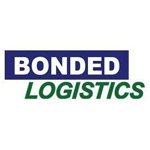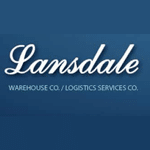RF and RFID in the Warehouse: What’s the Difference? Which do you Need?
In the world of warehouse operations, the terms RF (Radio Frequency) and RFID (Radio Frequency Identification) often come up, sometimes interchangeably. However, understanding the distinct roles these technologies play can significantly impact your efficiency and accuracy. Let’s dive into what sets them apart and how to determine which one your warehouse needs.
What Are RF and RFID?
At their core, both RF and RFID technologies utilize radio waves, but they serve different purposes and applications in the warehouse environment.
- RF (Radio Frequency): This technology is primarily associated with the use of radio waves to transmit data between two entities. In warehouses, RF is commonly used in barcode scanning systems, facilitating data capture from printed barcodes through handheld scanners or fixed devices.
- RFID (Radio Frequency Identification): RFID goes a step further by using radio waves to identify and track tags attached to objects. These tags, equipped with a small radio transmitter and receiver, do not require a direct line of sight to be read. This capability allows for the simultaneous scanning of multiple items, enhancing inventory management and tracking processes.
Side-by-Side Comparison
| Feature | RF | RFID |
| Technology Basis | Radio waves for data transmission | Radio waves for identification and tracking |
| Line-of-Sight Required | Yes, for scanning barcodes | No, tags can be read remotely |
| Application | Barcode scanning for inventory management, checkouts | Tracking and managing assets, inventory without physical scanning |
| Range | Short, depends on scanner range | Can vary from a few centimeters to several meters |
Understanding RFID in Detail
RFID stands for radio frequency identification. However, “RFID” refers specifically to systems that use materials with an embedded radio tag and antenna that can be read—and often written to—without a physical, line-of-sight scan.
RFID tags can be helpful. At the receiving dock, you could use RFID to “read” an entire inbound pallet at once without having to scan each carton. But that assumes your customer is labeling the pallet with RFID tags, you have a compatible system to read their tags, and your software can both access the customer’s data table and import the details into your system. Another customer may use a different type of RFID tag that your equipment might not be able to read.
Despite the infamous Wal-Mart mandate of 2003, RFID has not become ubiquitous in the supply chain. It has, however, found many adherents in manufacturing, healthcare and retail. You can read a good recap of the Wal-Mart RFID story ten years later here.
When someone contacts us about Cadre’s warehouse management system (Cadence WMS) and RFID, most of the time they are really asking about the radio frequency (RF) scanning of barcodes.
Scanning and Barcodes: The Role of RF
The early history of barcoding is not that different from the history of RFID to date. Invented in the 1950s, the first barcode was scanned in a grocery store pilot in Ohio in 1974. But it wasn’t until the Universal Product Identification Code (UPIC) was developed and the equipment installed at mass merchants in the 1980s that the transformation began.
Originally invented to speed up grocery checkout lines, barcodes have done so much more, providing businesses with information about their products, people and productivity. Today, you couldn’t ship a package without a barcode label on it, so it’s no surprise that people ask about RF. The answer is yes, of course: Cadence WMS not only works with RF, in many respects it requires the use of RF for you to get the most out of the efficiencies we will bring to your warehouse operations.
RF: More than Shipping Labels

Bar codes and RF scanning enable your physical world to become visible in the digital world. Printed bar codes on items, lot numbers, expiration dates, shelf/location labels and employee badges allow scanning technology to accurately retrieve information from your database and associate it. Sure, you could do it by hand, but RF speeds data entry and greatly improves accuracy.
That’s why using RF technologies in the warehouse helps companies to compete more effectively with “the Amazon effect.” As consumers, we expect our orders to be processed and delivered extremely quickly and with regular status updates. Your business’ customers are no different, except they probably are not anticipating drone deliveries any time soon.
Modern warehouse management systems like Cadre’s Cadence WMS easily integrate bar code labeling and scanning of shelves, components, SKUs (items), Lot #, Expiration #, Pallet #, Carton #, SSCC #, etc., so your system knows exactly when Part X in Kit Y on Shelf Z was picked by Employee A and put into Carton B for Customer C.
Here are a few of the most common RF label scanning activities in the warehouse:
- Location: Bar code labels on your warehouse racks, bin locations, floor locations, etc., identify the precise aisle, shelf and bin location of items, for faster picking and reliable put away.
- Product labeling: A bar code on a finished product or kit could identify all the parts and sub-assemblies that compose it, their points of origin and/or materials, the date it was kitted or completed, lot numbers, handling requirements, expiration date, manufacturing date, and more.
- Picking: Workers scan the shelf location and the product label to confirm the correct item is being picked. Inventory can be automatically adjusted in real time. The barcode on the “moveable unit” (box, carton, tote, pallet, etc.) is also scanned to identify the whereabouts of the picked item.
- Packing: Items are scanned on a conveyor or at packing stations. This ensures the right products get into the right boxes. It also identifies the contents of each box including the SKUs, Lot #, etc.
- Shipping: Cartons are scanned, and new barcode labels are added as they are palletized or loaded onto delivery vehicles. The dock door is also scanned to ensure the right pallet went on the right truck.
Your WMS should capture the date and time of each RF scan for a specific order. This way, your customer service rep can tell an inquiring customer precisely where their order is in real-time.
The widespread use of mobile devices in the warehouse and on delivery trucks means the speed and accuracy of RF can be applied to even more activities, generating more data about your business, your employees and your profitability.
By using RF scans to automatically record activity into your WMS software, you can build reports, access business intelligence, and exchange information electronically throughout your organization and with suppliers, partners and customers.
While RFID will eventually find its way into more warehouse environments, RF technology should be used today by all warehouses to improve accuracy, boost productivity, and increase customer satisfaction.
The Common Ground and Divergence
While both RF and RFID technologies enhance operational efficiency, their application, range, and requirements differ significantly. Understanding these differences is key to choosing the right technology for your warehouse needs.
Enhancing Your Warehouse with RF and RFID
Incorporating RF and RFID technologies into your warehouse operations can lead to significant improvements in accuracy, productivity, and customer satisfaction. As we navigate the evolving landscape of warehouse management, staying informed about these technologies and their potential applications becomes crucial.
Deciding whether RF or RFID technology best suits your warehouse operations depends on your specific needs, including the nature of your inventory, the complexity of your supply chain, and your technological infrastructure. By understanding the unique advantages and limitations of each technology, you can make an informed decision that aligns with your operational goals and enhances your competitive edge.
To learn more about how Cadre’s Warehouse Management Software and RF technology can help your business, contact us today.









